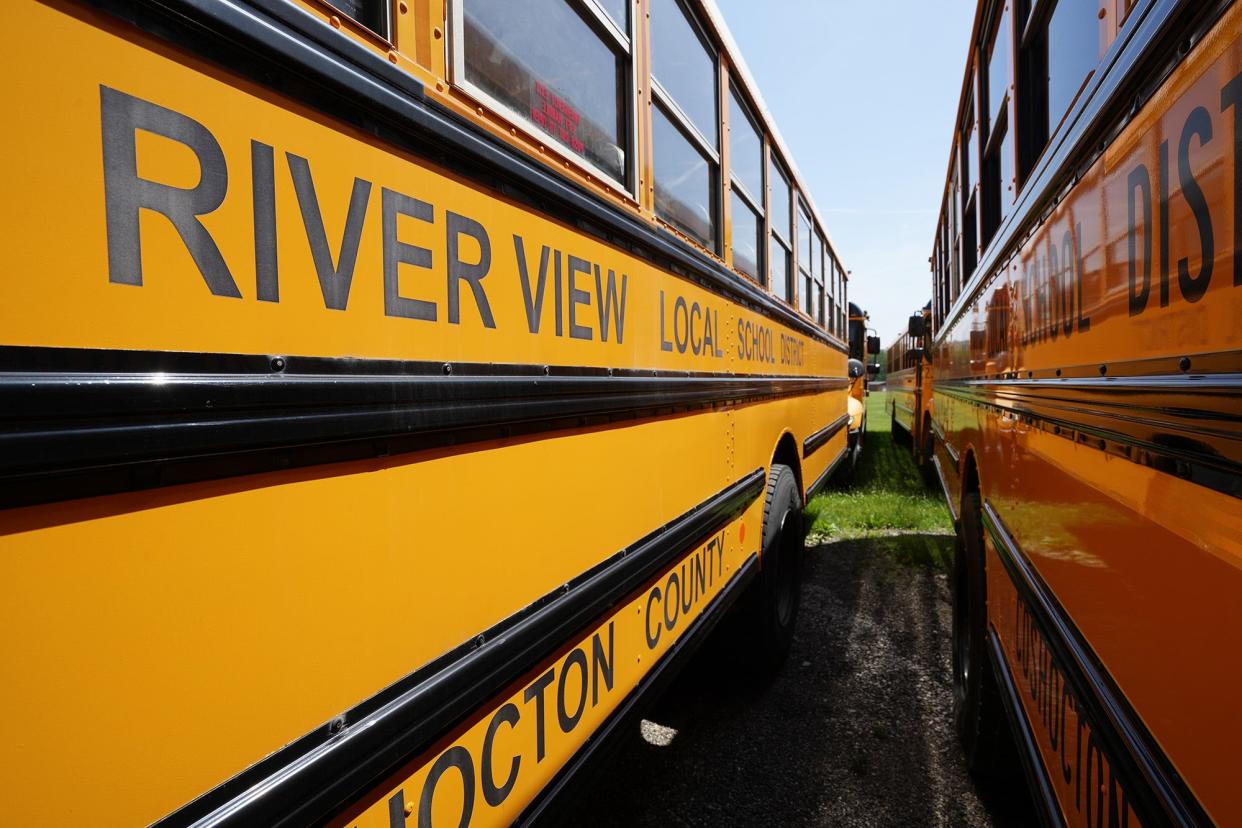Equity on the horizon: Ohio legislators propose $600 million for Appalachian schools

While the future of school funding in Ohio beyond 2023 is dependent on the next state budget, State Reps. Jay Edwards (R-Nelsonville) and Shane Wilkin (R-Hillsboro) have crafted new legislation to increase equity in education in other ways.
The lawmakers' proposal, introduced earlier this month, would set aside $600 million to improve conditions for more than 58,000 students across 38 school districts in 18 Appalachian counties.
Known as the Accelerated Appalachian School Building Assistance Program, it would create a program under the Ohio Facilities Construction Commission, the agency that oversees infrastructure projects for institutions supported by the state, which includes public K-12 schools.
“For too long, Ohio has prioritized investment in students from cities over students in rural areas,” Edwards wrote in a statement. “The introduction of this legislation sends a message to leaders in Columbus that it is time we deliver equitable school facility investment to Appalachian Ohio."
At River View Local Schools, where the district spends 15% of its $1.8 million transportation budget on fuel alone — transporting students across 376 miles of rural Coshocton County every day — that means it would be easier to afford building repairs or replace aging heating/ventilation systems, the district's superintendent, Chuck Rinkes, said.
More:Will Ohio have real equity in education? For now, future depends on next state budget
"Since the pandemic, everything cost-wise has gone up, and it’s not coming back down," he said. "And every year you wait, the cost is going to go up, so we're excited about this program."
New bill modeled after program that benefited urban school districts
In 2000, Ohio legislators passed a similar law called the Accelerated Urban School Building Assistance Program. As of 2020, it has allowed school districts in Columbus, Cincinnati, Cleveland, Akron, Toledo and Dayton to build or renovate 250 school buildings for $5.4 billion (with the state shouldering $2.7 billion of those costs).
During that same time period only $2.1 billion ($1.6 billion from the state) in facility plan expenses were allocated for 167 Appalachian school districts, said Richard Murray, executive director of the Coalition of Rural and Appalachian Schools.
"We're not really asking to be accelerated." Murray said, "We're asking to be brought back up to speed and treated the same."
The new program also would create an incentive for school districts to pass levies, Murray said.
Usually, in order to repair facilities, replace HVAC systems or start construction, voters have to pass levies for their school districts that raise taxes. The residents bear the brunt of the costs for those projects and the state contributes a small percentage.
But this program has the potential to increase the state's share of expenses and reduce the taxpayers' burden for those costs. That means that if the school board proposed a levy to build a new high school in a district like River View Local Schools, the state share of those construction expenses would increase.
"In my lifetime, I’m 53 years old, our district is going to have to build a school building," Rinkes said.
Currently the state pays 19% of the district's infrastructure projects, the superintendent said, but if a levy passed without objections on the first try the state's share would nearly double to 39%. If it failed once or even twice but later passed the state would be required to take on additional shares, but at a smaller percentage.
"If this becomes law," Rinkes added, "our district and school board will have to look at this seriously, because we've never been in a better position, from the perspective of a River View taxpayer, to make real changes."
Repairing a legacy of inequity
Rinkes and other Appalachian superintendents know how difficult it has been for lawmakers to make funding for public education equitable across the state since the Ohio Supreme court ruled that the state's that funding model was unconstitutional 25 years ago.
By relying on property tax values, the court said in a landmark 1997 decision, DeRolph v. State of Ohio, a child's education was unfairly dictated by their ZIP code. Since that case, Ohio has gone through more than 100 iterations of school funding formulas, models and mechanisms.
The most recent plan, passed in 2021, has been working better, so far, Rinkes said, but there is more work to be done.
"Listen, there are hundreds, if not thousands of bills that are introduced (by lawmakers) and a few become law," he said. "But I think there's a definite possibility that this passes."
A spokesperson for DeWine's office told The Dispatch that the governor is aware of the recently proposed program and appreciates the added focus on the Appalachian region.
For Murray, this moment is about creating equitable education in southeast Ohio and urging the state to put money — especially some of the outstanding, federal COVID relief funds — toward the region.
"I mean we all learned in kindergarten to treat everyone fair, right?"
Céilí Doyle is a Report for America corps member and covers rural issues in Ohio for The Dispatch. Your donation to match our RFA grant helps keep her writing stories like this one. Please consider making a tax-deductible gift at https://bit.ly/3fNsGaZ.
You can reach her via email at cdoyle@dispatch.com or follow her on Twitter at @cado
This article originally appeared on The Columbus Dispatch: Ohio legislators propose $600 million for Appalachian school districts

